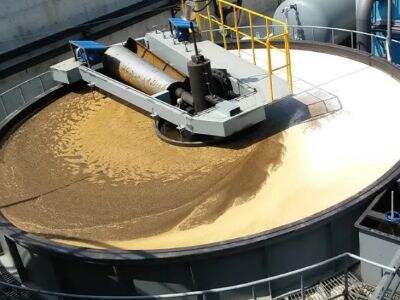Dissolved Air Flotation (DAF) technology is vital practice to the DAF System for water treatment today. These systems are known for removing impurities from water to ensure it is safe for drinking, food preparation and other important applications FREE QUOTE DAF Systems: How They Work The Benefits of Choosing DAF Systems in Water Treatment DAF systems Purified water is a vital part of industrial processes Whereas water treatment processes help purify water, not all water recycling plants can effectively remove pollutants, making return to the natural environment dangerous. We will consider, as well, new developments in DAF technology that may facilitate water treatment even more.
Dissolved Air Flotation Systems Summary of DAF Operations The definition of DAF is very simple as it just means removal of very small, or light small particles in solution.
DAF (Dissolved Air Flotation) and ACE (Air Charged Entrainment) combined into one – attached and entrained air for higher separation efficiencies Upgradable to a full ITS (Integrated Treatment System) – including upgraded control panel, chemical feed pumps, polymer make down system, flocculation tubes, pre-wired and pretested as a complete wastewater treatment system. These bubbles adhere to something solid, like a particle, and carry it to the surface where it can be skimmed away. This is a process of purification of water so that one can drink and use.
Advantages of Aeration and DAF in Water Treatment
There are numerous advantages to DAF systems for water treatment. The primary benefit is that they are very efficient in removing a variety of contaminants, such as oils, greases, suspended solids, among others. This has them well suited for the treatment of very dirty or contaminated water.
In addition, DAF systems are considered to be simple and relatively inexpensive. They take up less space and are simpler to operate than other water treatment systems. This makes them ideal for single units installed in households and also in massive water treatment plants.
How DAF (Dissolved Air Flotation) and DAF Systems Work to Remove Contaminants from Water
DAF systems function efficiently by generating intervals of pressurized air and then releasing it into the water and create micro bubbles. These bubbles adhere to particles in the water, causing the particles to rise to the surface. They rise and settle as a sludge layer that can simply be removed.
DAF systems also can provide additional benefits such as contributing to the removal of oils and greases from water in addition to solids. They attach to these materials and float allowing the solids to be skimmed off. This serves to filter the water and render it drinkable.
This is what a DAF system does when used in Industrial Wastewater Treatment
Industrial waste water can often be heavily polluted and difficult to treat. DAF systems are very important in purifying this water to be sent out to the environment. Those systems can work to extract a variety of pollutants that may be present in industrial wastewater, such as heavy metals, chemicals, and organics.
Industrial DAF Systems in particular can help protect the environment by ensuring the industries process their waste water such that it does not damage local ecosystems. This is important to makeeep the water sources clean and healthy for everyone to enjoy.
Prospective developments of DAF technology for water treatment
If anything, DAF systems continue to evolve as technology marches on. Researchers continue to work to enhance these systems and to make them even better at treating water. A promising breakthrough is the emergence of novel filtering materials to monitor the amount of smaller particles and dissolved contaminants in water.
Mariana Canellas, a steam and gas-turbine generation investigator at the Electric Power Research Institute, said academics are focusing on how to improve DAF systems for more energy-efficient and environmentally friendly treatments. Through the use of new methods and materials, they seek to improve how we treat water in a more sustainable and effective manner in the future.
Table of Contents
- Dissolved Air Flotation Systems Summary of DAF Operations The definition of DAF is very simple as it just means removal of very small, or light small particles in solution.
- Advantages of Aeration and DAF in Water Treatment
- How DAF (Dissolved Air Flotation) and DAF Systems Work to Remove Contaminants from Water
- This is what a DAF system does when used in Industrial Wastewater Treatment
- Prospective developments of DAF technology for water treatment

